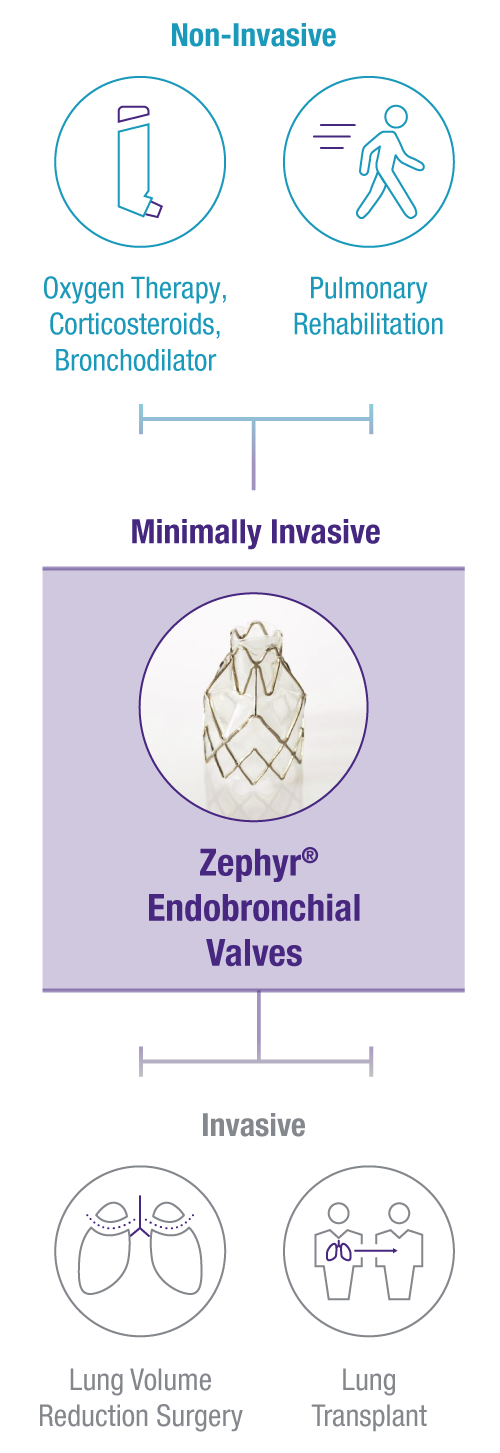When You Have Emphysema, a Form of COPD, Breathing Becomes Hard Work
Find Out if You May Qualify for the Zephyr Valve
Since the disease gets worse over time, people often “get used to” the limitations their symptoms have on their lives. This creates a new “normal” for people without them even realizing it.
Know Your Treatment Options
Medication, often delivered via an inhaler, is still usually the first thing your doctor will suggest. But as your disease progresses, some medications that worked well for several months may stop being effective.
For some people, medication and oxygen do not provide enough relief. Until the Zephyr Valve became available, procedures involving cutting or incisions have historically been the only other option.
The Zephyr Valve is a minimally invasive, non-drug treatment for severe emphysema that may help you breathe easier, be more active, and improve your quality of life.1
Please review the safety information provided on this site.








